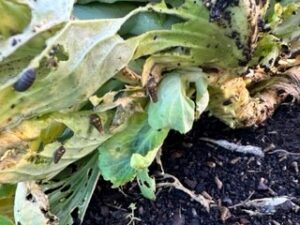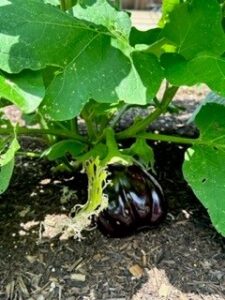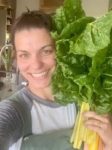June Vegetable Garden Checklist Tips from Paula Wolfel
It is June and it is getting hot! Although we were spoiled with some good rain last month, we also had a few over 90 degree days. With this heat, watering will be the most important part of your gardening regiment. But in my opinion, June is the best month to enjoy all the work you have put into your garden to date.
Your June Vegetable Garden Checklist:
WATER
- Water is the most important factor in the garden as the temperatures start to rise. Your vegetable garden prefers rain, but if there is none in the forecast, then make sure you are deeply watering plants every morning while those roots are taking form.
- Avoid getting water on leaves by applying water to where the plant meets the soil. When temperatures are above 90 degrees, water your plants at the soil line every morning and give them a long, deep water once a week. Stick to daylight irrigation times. Watering at night can create ideal conditions for fungal growth.
- Keep the plants evenly moist to encourage optimal growth.
FERTILIZE
- Feed vegetable plants with water-soluble fertilizers every other week as needed.
- Be careful to not apply liquid fertilizers to top side of leaves, otherwise you can cause a salt build-up.
SOIL
- Make sure your soil is covered with mulch to protect the soil from drying out and to limit weeds.
PLANTING
- Seeds to plant:
- Cantaloupe (first part of month)
- Greens – warm season (all month)
- Okra (all month)
- Pumpkins (all month)
- Southern Peas (all month)
- Winter squash (first part of month)
- Plant Slips
- Sweet Potatoes (all month)
DISEASES/PESTS
- Pests to watch out for:
- Conchuela stink bugs (Chlorochroa ligata) and squash bugs (Anasa tristis): pick by hand and squish or drown in soapy water, or use a handheld vacuum and suck them up.
- Striped cucumber beetles (Acalymma vittatum) and spotted cucumber beetles—they look like yellow lady bugs (Diabrotica undecimpunctata)- remove them by hand and squish or drown in soapy water.
- Aphids: the best defense is lady bugs and they should arrive naturally. You can also spray with a hose, spray soapy water on the plant, or remove with tape.
- Snails and slugs, pill bugs, cabbage loopers, and caterpillars: remove by hand or place half-full, shallow containers of beer into the ground in shady areas as traps.

Be sure to check under leaves for pests.
- And coming soon will be my least favorite: the squash vine borer. There really isn’t any treatment or prevention for these pests. You can place insect screens or plant netting on top of the plant from its earliest stages and hand pollinate. Otherwise, the only thing that can be done is simply buying time to get some harvest. Every morning and evening, bring tape to the garden and search the leaves (both sides) and the stalk and have the tape pull the eggs off of the plants.
- What to do:
- Encourage beneficial insects such as spiders, lady bugs, praying mantis, lacewings, wasps to come to your garden. Birds, lizards, and snakes also help.
- Powdery Mildew is the main disease to watch for this month. It’s a fungal disease that affects many plants in the garden and is prevalent during times of high humidity.
MAINTENANCE

Keep up with the harvest to limit damage from critters
- Always keep up with the weeds so they don’t have the opportunity to set seed.
- Keep up with your harvest to limit damage from critters and insects.
Additional Resources
Watch the Vegetable Gardening in Central Texas Webinar
Vegetable Planting Calendar (Español, 繁体中文)
Recommended Vegetable Varieties for Travis County
Plant Rotations, Successions and Intercropping
Sustainable Food Center Farmers Markets
Monthly Gardening Calendar for Austin and Central Texas
About Paula Wolfel
 Paula Wolfel joined the Travis County Master Gardener program in 2022, but has been gardening in Austin, Texas since 2017. She grew up in the suburbs of Chicago learning how to garden from both her father—a Sicilian vegetable and fruit tree gardener—and both her grandmothers, and then spent years in Virginia gardening. Paula loves gardening because she finds it to be a grounding force- it gets her out of her head and into the present. She loves the pride that comes with cooking a meal for her family with every ingredient coming from her garden… and then the humility she feels when she loses an entire crop because of Mother Nature. She finds gardening to be wisdom, lessons, best practices passed down generation to generation, season to season and hopes to share that with you.
Paula Wolfel joined the Travis County Master Gardener program in 2022, but has been gardening in Austin, Texas since 2017. She grew up in the suburbs of Chicago learning how to garden from both her father—a Sicilian vegetable and fruit tree gardener—and both her grandmothers, and then spent years in Virginia gardening. Paula loves gardening because she finds it to be a grounding force- it gets her out of her head and into the present. She loves the pride that comes with cooking a meal for her family with every ingredient coming from her garden… and then the humility she feels when she loses an entire crop because of Mother Nature. She finds gardening to be wisdom, lessons, best practices passed down generation to generation, season to season and hopes to share that with you.

